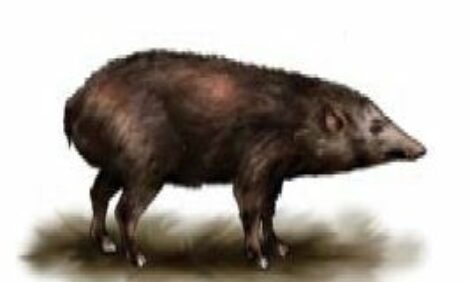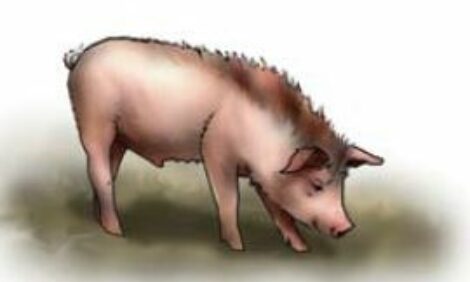



Tibetan
The Tibetan pig on the Qinghai-Tibet Plateau is especially adapted to the high, cold climate and to being on pasture all year round. They are a relatively small breed, growing to an average of 35 kg as adults. They have a narrow head, with a long straight snout, and a black coat with long, straight bristles. These bristles protect it from both the sun, and cold temperatures in its high, cold native terrain. The back and waist are horizontal and a little protrusive, with the front body lying lower than the rear. They have a highly-developed digestive system, evolved to deal with the sparse feed, which is mostly comprised of stems, roots, and seeds of wild plants. It has a very high body-fat content, and a low prolificacy, with only 5 in the average litter.
The Tibetan pig is mainly distributed over the drainage basin around the middle of the Bramaputra River and the high-mountain and deep valley areas between three rivers (Nu River, Lanlun River and Jinsha River) of East Tibet. The main habitat of the Tibet pig is within the forest and valley zone which is located at an altitude of 2900-4100 metres. The Tibetan pig is currently facing a decline in numbers, and is listed as in danger of extinction. This is due to its preference for free-range rearing, and a low-suitability to intensive farming techniques. They do, however, have a sweet, marbled meat, which is very popular in Tibet. In research carried out to test crossbreeding performance of Tibet pigs, the daily gains and feed conversion rates of three different crossbred offspring (Berkshire, Soviet White, and Yorkshire) were much higher than that of pure Tibet pig.
Image courtesy of the FAO's Farmer's Hand Book on Pig Production








